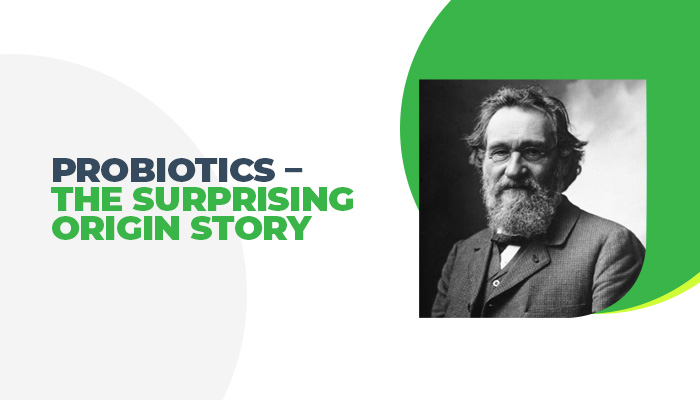The Origin Of Probiotics
A Russian zoologist named Ilya “Elie” Ilyich Mechnikov, who was a zoologist who pioneered some of the research that led to what we now know as immunology. Once of the more famous experiments he performed was of the defense mechanism observed in a starfish larvae. He pinned small thorns to its body and noticed that the cells surrounding the thorns began to change. This was laters discovered to be the active response from the body which was attempting to maintain its integrity.
Mechnikov later discovered a phenomenon called “phagocytosis” – wherein the body defends itself against another foreign body. This laid the foundation for what we now know as immunization through his experimentation and was awarded a Nobel Prize for his contributions to science.
Today, he is known as the “father of immunity” and is celebrated for advocating the use of lactic acid bacteria, which is found in almost all modern probiotics.
What Are Probiotics?
Probiotics, by definition, are living microorganisms that are considered “good” for you. The “good for you” as it relates to probiotics can be debated and many medical professionals downplay or dismiss their efficacy. But not everyone is so skeptical.
In fact, dismissing the benefits of probiotics is a very new idea. Ancients in Greece and Rome regarded soured milk or yogurt called “oxygala”, and ate it regularly with honey. Yogurt, which is similar, is known to contain high amounts of probiotics. The “Greek diet” is considered amongst most health professionals to very closely align to what is now considered a “healthy diet”.
Probiotics Are Consumed All Over The World
Europe, Asia, Africa, and The Americas. Nearly every culture consumes some form of fermented food or drink and many of them contain probiotics.
For example, there’s kimchi – a fermented cabbage enjoyed by many Korean people. There’s also soy sauce, which was originally created in China (now used worldwide) which contains 10 times the amount of antioxidants of wine and is rich with probiotics. Then theres sauerkraut – a fermented cabbage which is very popular in Austria and Germany, and contains high amounts of probiotics while also being great on a hot dog.
These are just some examples of sources of probiotics that are consumed around the world. Virtually every culture enjoys some form of fermented food or drink containing some form and concentration of probiotics – kefir (a yogurt-like drink), kombucha (a fermented drink usually made from fruit juice), cheese, wine, and the world’s favorite alcoholic drink – beer.
Probiotics can be found almost everywhere including our very own body, which hosts an estimated 40 trillion microorganisms.
The Most Popular Strains of Probiotics
Lactobacillus or lacto for short is one of the most common types of cultures found in our digestive system and therefore, most prevalent in probiotics supplements today. A common strain of Lacto is called L. acidophilus and can help to break down food and absorb nutrients. It is also used to treat overgrowth in female digestive and reproductive systems.
Bifidobacterium
Residing in your intestines, the most common species of Bifidobacterium is known as B. bifidum. This probiotic has several benefits as it helps the body perform essential functions and helps fight off invasive or harmful bacteria. It is usually used to treat IBS (irritable Bowel Syndrome) and constipation and more.
Each manufacturer of probiotics has a set protocol for the handling and manufacturing of probiotics supplements, but most premium supplements will contain some type of prebiotic with their supplements. A prebiotic is a source of food for the probiotics and is included to prolong their life while on the shelf.
Choosing A High Quality Probiotic Supplement
There are 3 main things to pay attention to when choosing a probiotic. They are:
- Potency – Generally shown in the billions of strains, an effective dose according to recent studies is 5 billion, so any supplement should have at least that amount.
- Diversity – The different types of strains in any probiotic are important. High diversity means that you can supplement different cultures within your microbiota (the habitat in your gut).
- Quality – Depending on the packaging, most premium supplements will clearly state on the label potency, strain count and quality. Examples of quality can be “gluten-free”, “non-GMO”, and “NSF Certified”. The quality is somewhat subjective, but premium probiotic supplements will generally be manufactured in a NSF GMP facility, have high potency and high strain counts.



